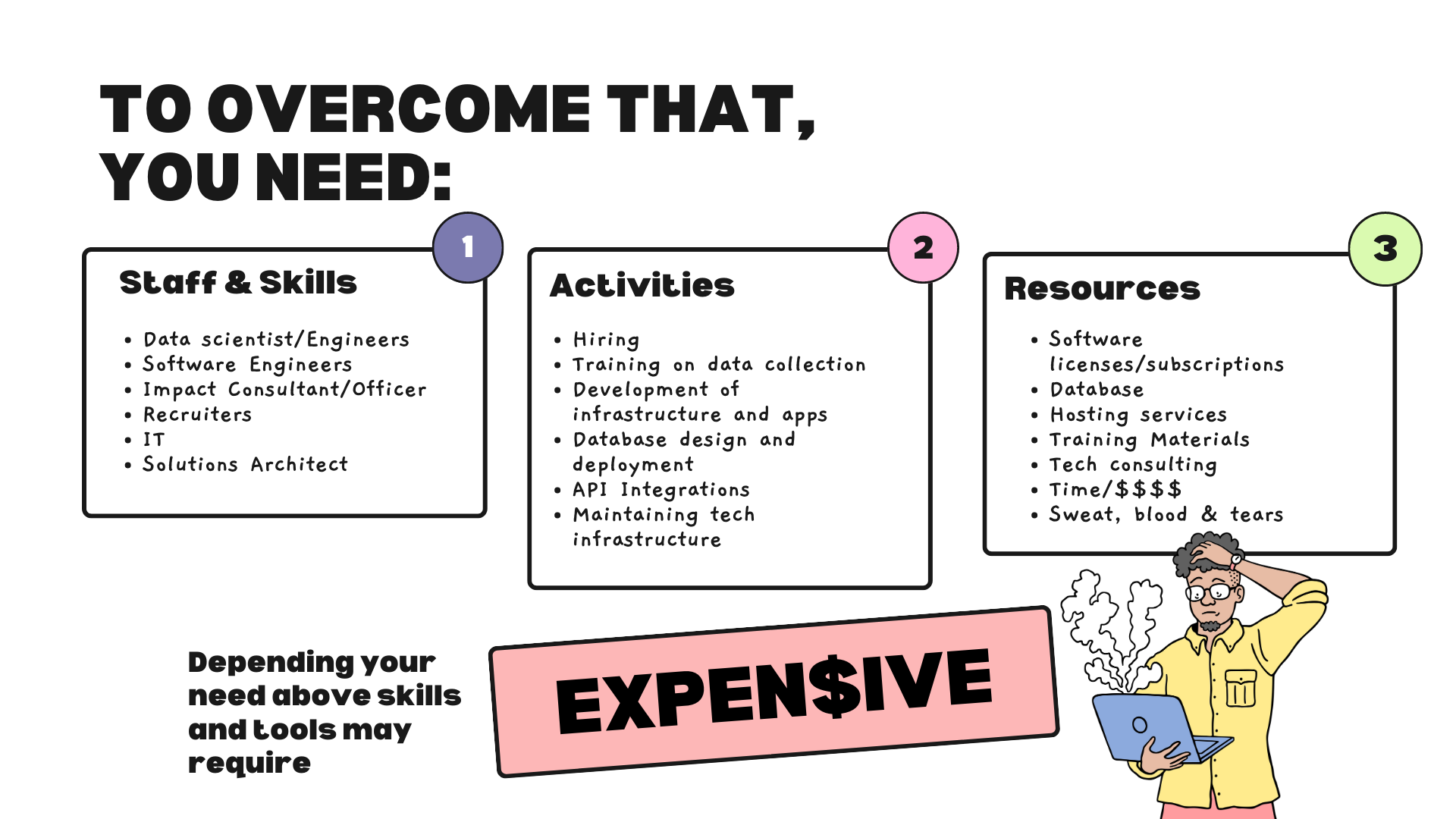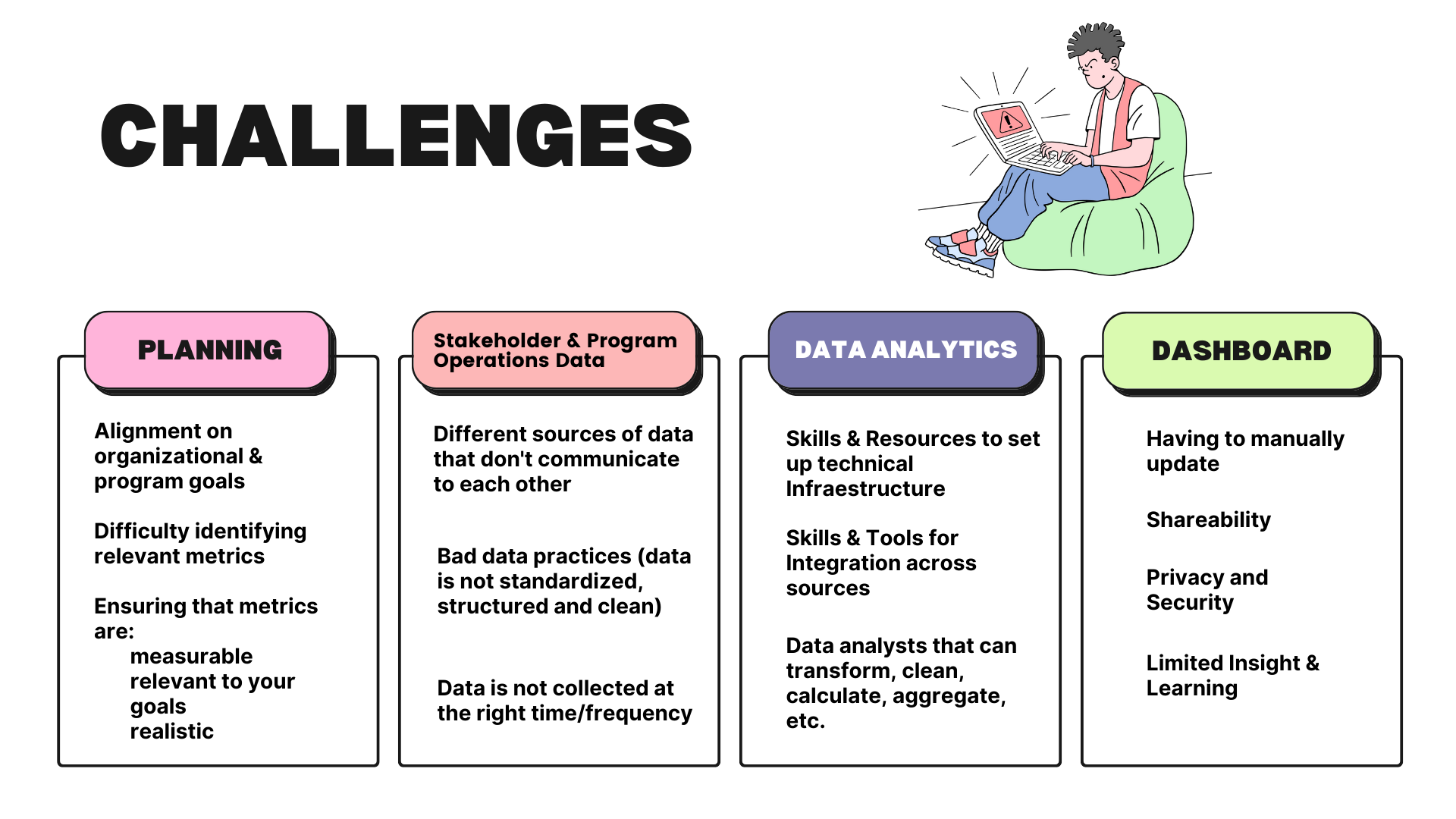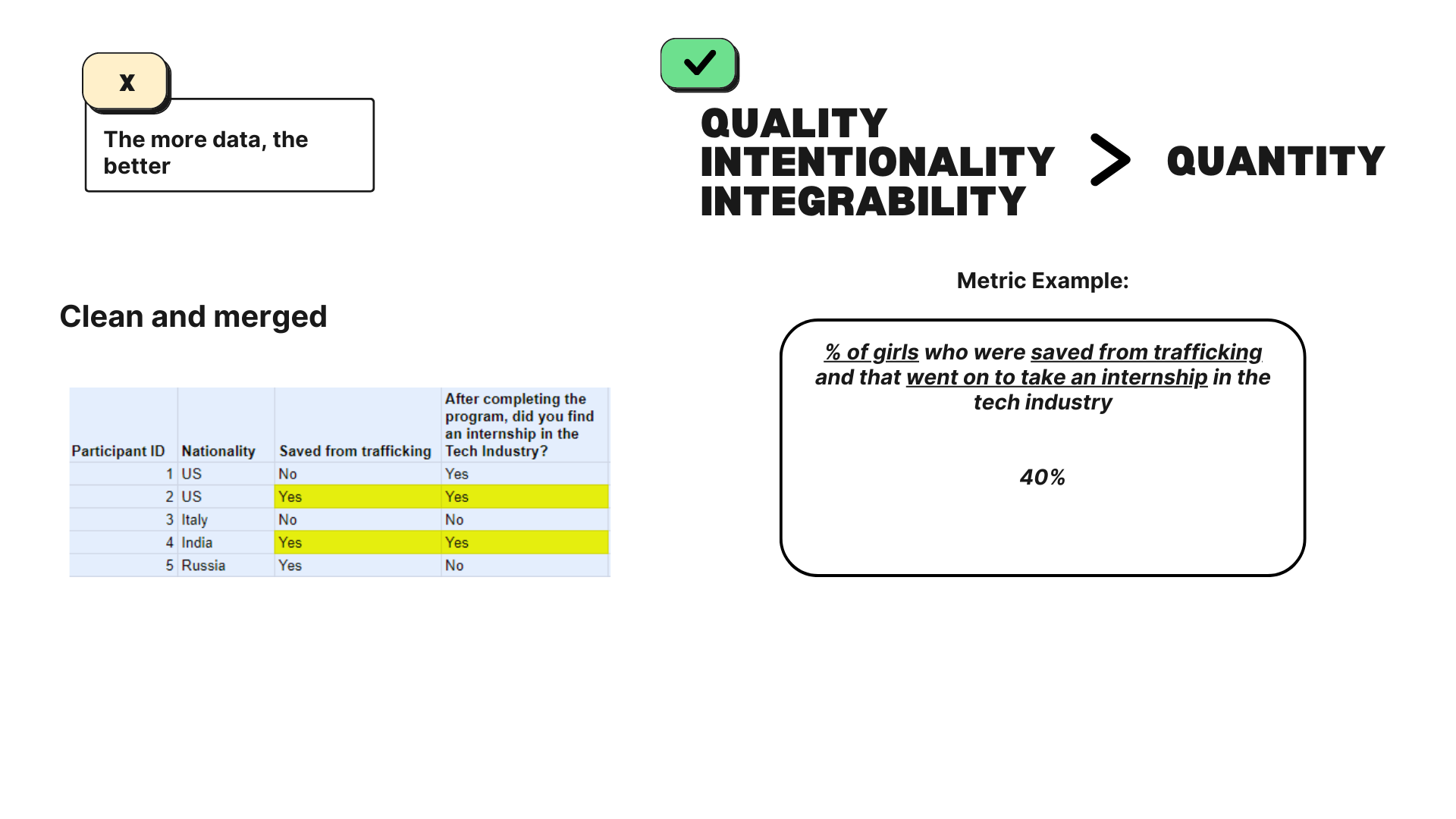Monitoring and Evaluation Challenges
In the bustling realm of nonprofits and international non-governmental organizations (INGOs), Monitoring and Evaluation (M&E) software has become the norm rather than the exception. These tools, crucial in achieving significant objectives, are based on a results-oriented framework. However, the path to their seamless integration is strewn with obstacles. From overly simplistic models to convoluted systems that hinder improvement, M&E software often struggles to offer scalable solutions that can consistently collate results. This article offers a deep dive into the eight most critical pitfalls one should sidestep when opting for M&E systems, along with comprehensive solutions to conquer these prevalent difficulties.
Decoding the Challenges in Monitoring and Evaluation
Let's begin by dissecting the most formidable hurdles in M&E, offering clear, step-by-step solutions to these perplexing issues.
Shattering the Myth: Monitoring & Evaluation as Luxury
In social impact, a common misbelief persists that impact measurement is an extravagant, necessary evil solely undertaken to appease funders. Numerous social entrepreneurs echo this sentiment, viewing measurement as an extraneous task when they are already contributing to societal well-being, especially during the early stages of their ventures. However, though self-serving, these arguments highlight a profound misunderstanding of impact measurement.
Bridging the Gap: The Data Trust Deficit
A colossal amount of funding gets dispensed based on donor requests, yet the data collated often fulfills no purpose other than satisfying reporting prerequisites for board members and international development projects. This unnecessary evil fails to foster trust with donors. Enhancing impact management calls for a cultural shift towards impact and outcome alignment, improving the understanding of impact measurement, and a commitment to enhancing the data culture. We can foster trust, save invaluable resources, and instigate meaningful social change by addressing these concerns.

Monitoring and Evaluation Plan
Navigating through the tumultuous Monitoring and Evaluation (M&E) waves often presents unique challenges. The process can seem like a complex labyrinth, from establishing organizational goals and measuring relevant metrics to managing data and generating insights. With this in mind, let's take a closer look at these four primary areas of concern, detailing how they contribute to the adoption hurdles and exploring feasible solutions.

Overcoming Misalignment and Metric Identification Hurdles
Alignment on Organizational & Program Goals: Recognizing the necessity of Monitoring and Evaluation is critical. The misconception that M&E is a luxury or an unnecessary evil misaligns an organization's efforts. Impact measurement is not about satisfying a funder; it is about understanding the effect of your actions, the social good you are fostering, and how to scale it efficiently and sustainably. Integrating impact measurement with your operational model from the start is essential, just like a healthcare delivery organization did in India, scaling an entire program statewide with a systematic approach to impact measurement.
Difficulty Identifying Relevant Metrics: Once the importance of M&E is acknowledged, the challenge lies in selecting relevant metrics aligned with your Theory of Change (ToC). Many organizations either overlook this crucial alignment or focus on activity and output data that may not be relevant to their primary mission and vision. This misalignment hampers the understanding and communication of social impact, which could be mitigated by transitioning from ToC to a more actionable Theory of Action.
M&E Data
Tackling Bad Practices, Source Incompatibilities, and Collection Timing
Bad Data Practices: Billions of dollars are spent for social impact, with data often serving no purpose beyond fulfilling reporting requirements. It's time we shift this culture and build trust through quality data, aligning impact and outcome objectives with donor expectations. Unfortunately, data collection practices often lack standardization, structure, and cleanliness, leading to distrust and resource wastage.

Different Data Sources: The 'data islands' created over time due to disparate data sources and rudimentary data aggregation can make tracking difficult and erode trust. Organizations can overcome these issues with an effective data strategy and robust data management.

Stakeholder & Program Operations Data: Gathering stakeholders' feedback is paramount for gauging the effectiveness of social interventions. However, a systematic approach often lacks to collect and assess stakeholder sentiments and integrate them into program operations.
Data Collection Timing/Frequency: The timing and frequency of data collection play a vital role in generating valuable insights. Collecting data at inappropriate times or intervals can severely limit the potential for learning and adaptation.
M&E Data Analytics
Bridging the Gap with Skills, Resources, and Integration
Setting Up Technical Infrastructure: Many organizations lack the necessary skills and resources to set up the infrastructure for data analytics. Investing in developing these skills and setting up a scalable data warehouse can drastically improve data management.
Integration Across Data Sources: Without effective data integration, information gathered from various sources can lead to inconsistencies and confusion. A strategic approach to data analytics, emphasizing integration, can alleviate these challenges.
Data Analysts: There is often a shortage of data analysts who can perform complex data operations. Employing skilled analysts can enable organizations to make more informed and impactful decisions.
Monitoring and Evaluation Dashboard
Conquering Manual Updates, Privacy, Security, and Limited Insight
Manual Updates: Manually updating a dashboard is time-consuming and prone to errors. Automating this process can improve efficiency, reduce mistakes, and save valuable time.
Privacy and Security: As with any data-driven operation, data privacy and security are of utmost concern. A commitment to strong privacy and security protocols is essential to building stakeholder trust and ensuring regulation compliance.
Limited Insight & Learning: A dashboard should not merely be a data repository but provide actionable insights. Developing a dashboard with robust analytical capabilities can enhance the learning process and help organizations make more informed decisions.
To make M&E more than just a necessity, organizations must embrace it as an invaluable tool for measuring and managing social impact. They can bridge the gap between their current practices and a comprehensive, effective M&E system that drives meaningful social change by overcoming these challenges.
Monitoring and Evaluation Software
A Game-Changer in Monitoring and Evaluation
In today's fast-paced world of nonprofits and international non-governmental organizations (INGOs), the importance of effective Monitoring and Evaluation (M&E) software cannot be overstated. These software tools have become the norm rather than the exception, providing a results-oriented framework to achieve significant objectives. However, the integration of M&E software comes with its own set of challenges. Let's explore how M&E software can overcome these hurdles and revolutionize monitoring and evaluation.
One of the major challenges organizations face is the lack of scalability in their M&E systems. Many software solutions on the market offer overly simplistic models that fail to capture the complexity and diversity of social impact initiatives. This limitation can hinder organizations' ability to collate results consistently and make informed decisions. However, with the right M&E software, organizations can overcome this challenge by leveraging advanced data analytics and visualization tools. These features enable them to analyze large datasets, identify trends and patterns, and generate valuable insights that drive meaningful social change.
Another common challenge is the misalignment between organizational and program goals. Organizations often view M&E as a luxury or an unnecessary evil, which leads to a disconnect between their efforts and the impact they aim to achieve. However, M&E software can bridge this gap by providing a comprehensive monitoring and evaluation plan that aligns with the organization's objectives. By integrating impact measurement into their operational model from the start, organizations can ensure that their efforts are focused on fostering social good and scaling their initiatives efficiently and sustainably.
Furthermore, M&E software addresses the data trust deficit in the social impact space. Many organizations collect data solely to fulfill reporting requirements, which fails to foster trust with donors and stakeholders. However, with M&E software, organizations can establish a robust data culture that prioritizes impact and outcome alignment. By investing in quality data collection practices, standardization, and cleanliness, organizations can build trust, save valuable resources, and demonstrate their commitment to transparency and accountability.
Additionally, M&E software tackles the challenges associated with data management and integration. Many organizations struggle with disparate data sources and lack the technical infrastructure and skilled analysts to manage and analyze their data effectively. However, with the right M&E software, organizations can streamline their data collection processes, integrate data from various sources, and leverage advanced analytics capabilities. Integrating data sources and analytical tools empowers organizations to make more informed and impactful decisions, driving positive change in their communities.
Lastly, M&E software enhances the monitoring and evaluation process using interactive dashboards. These dashboards provide real-time insights, automate data updates, and ensure data privacy and security. By automating manual updates, organizations save valuable time and minimize errors. Moreover, the robust analytical capabilities of M&E software enable organizations to gain deeper insights into their programs' effectiveness, facilitating continuous learning and improvement.
In conclusion, M&E software is a game-changer in monitoring and evaluation. It addresses the challenges organizations face, such as scalability, misalignment of goals, data trust deficit, data management, and limited insights. Organizations can overcome these challenges by leveraging advanced data analytics, visualization tools, and interactive dashboards and revolutionizing their monitoring and evaluation processes. M&E software empowers organizations to measure and manage their social impact effectively, driving meaningful change and creating a better world.

.png)

.jpg)

